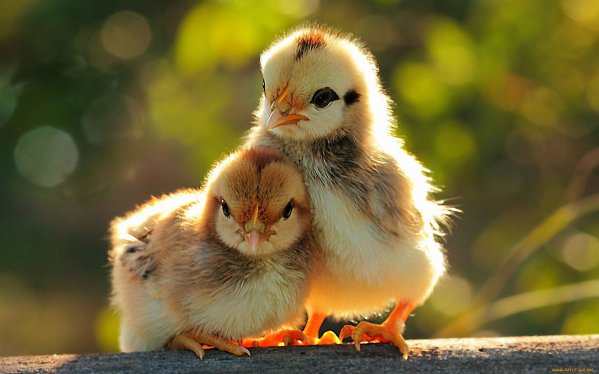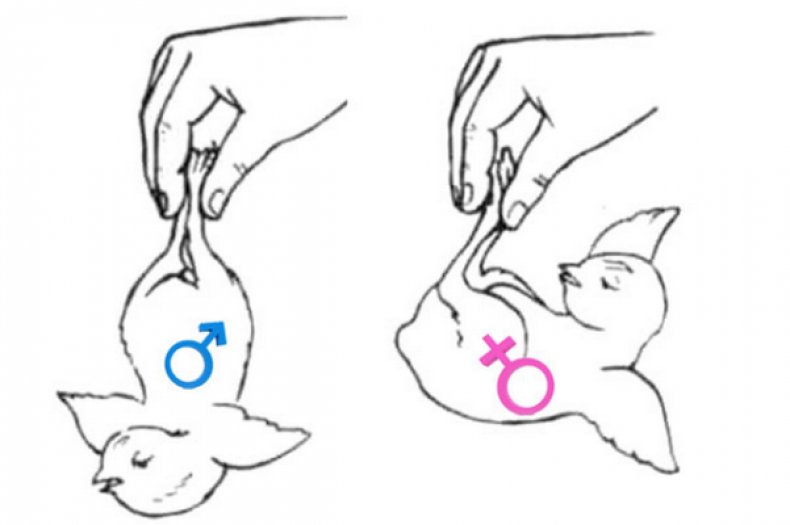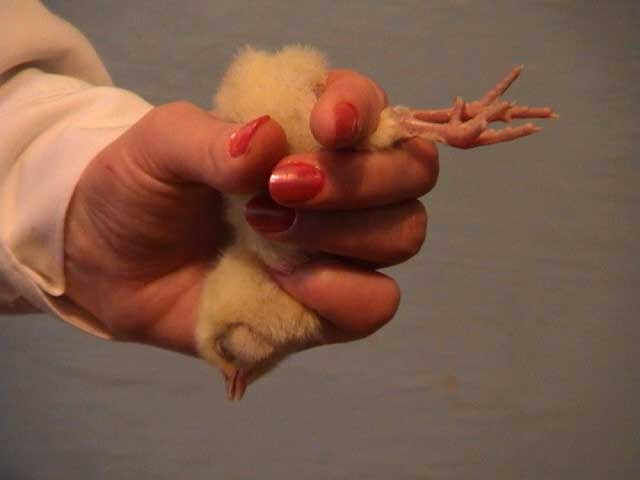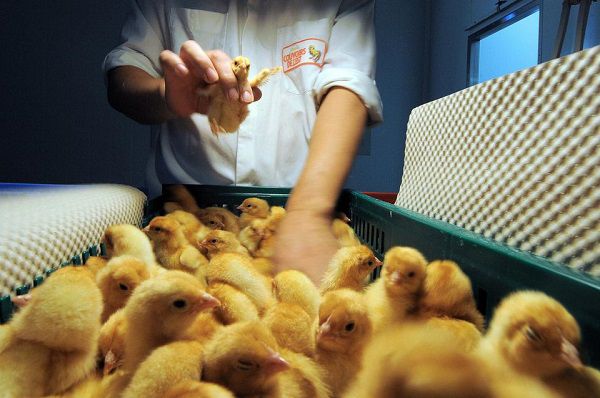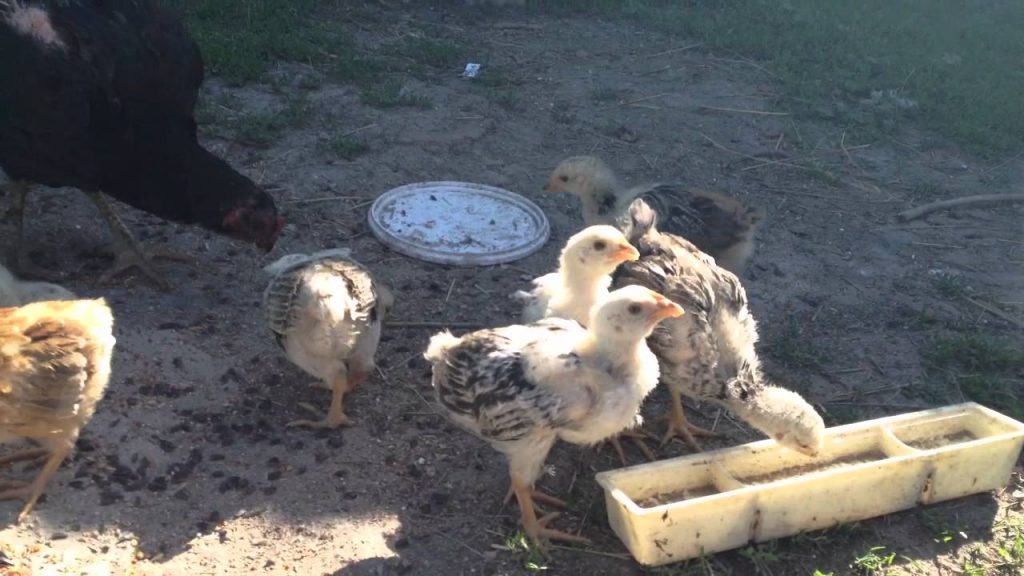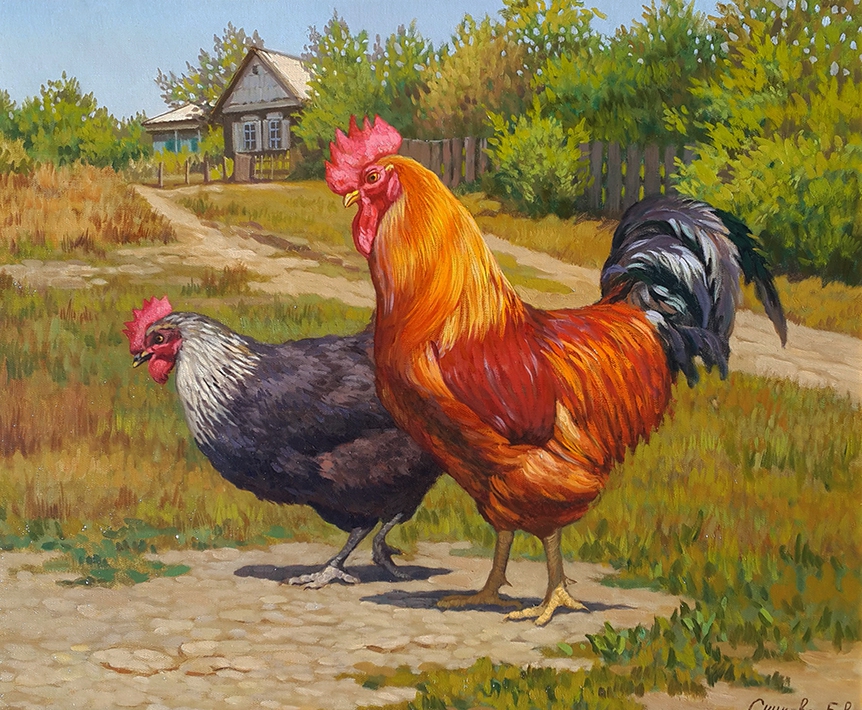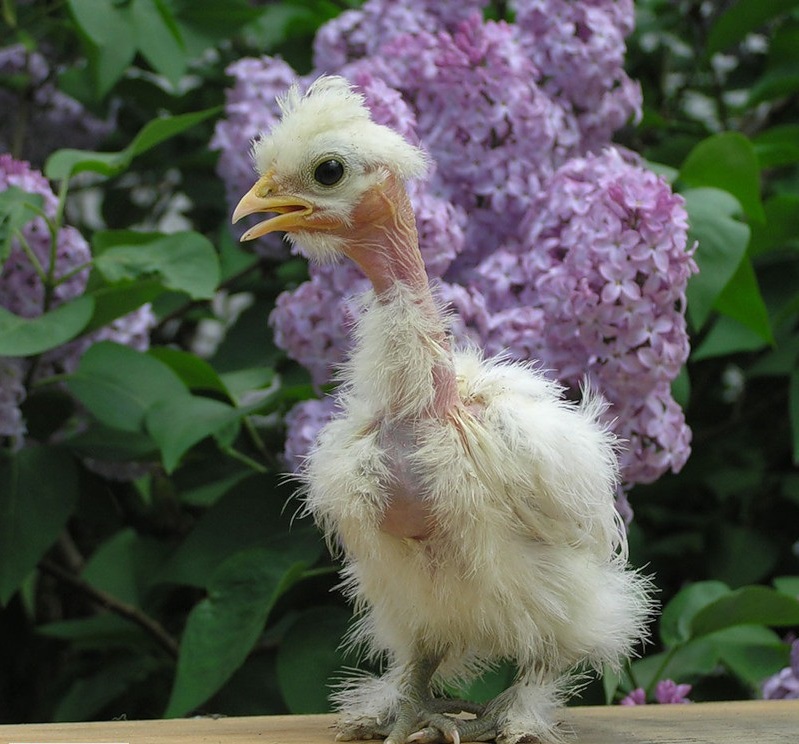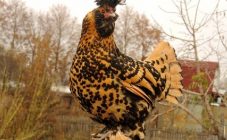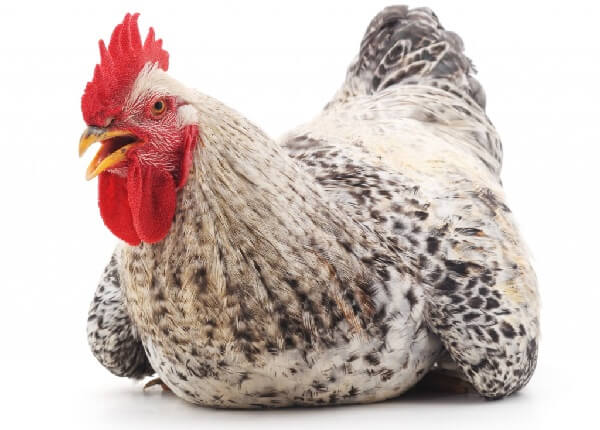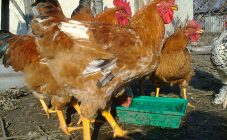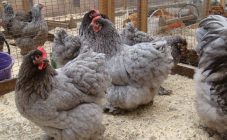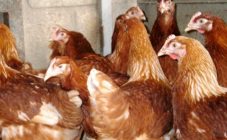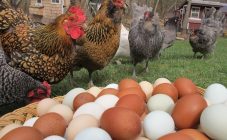Content:
- How to egg, before birth, determine the gender of the chicken
- How to determine the gender of a chicken
- How to distinguish a broiler from a simple chicken
- How to tell an adult chicken from a rooster
- How to distinguish a cockerel from a chicken Dominant chicks
- How to distinguish between chickens: chicken or hairless rooster
- When chicks get their first feathers
Gender separation of chicks is important to poultry farmers. In household plots, for the production of eggs, predominantly female eggs are needed. To obtain eggs and dietary meat, day-old chickens and cockerels of meat-eating species are separated and raised purposefully. There are several ways to recognize the gender of a chicken, from high-precision, 100% reliability, to traditional methods.
How to egg, before birth, determine the gender of the chicken
Owners of chicken farms claim that chickens hatched in incubators are 80% males. For egg farms, these statistics are not relevant. Therefore, it is important to learn to distinguish between the sex of the chick before setting the eggs in the incubator.
- Can be recognized by the eggshell. If there are tubercles and rings at the sharp end, then there is a cockerel inside. If the surface is smooth, the chicken will hatch. Many farmers use this method and claim that it is effective.
- By the shape of the egg: pointed - a cockerel will hatch, round - a chicken. Theoretically, the shape of the egg depends on the structure of the laying hen's oviduct, so this method is questionable.
- Translucent eggs with an ovoscope. The air chamber under the shell is examined. If it is in the middle in the center, then the male will hatch. If it is offset, then the chicken.
How to determine the gender of a chicken
Checking in one way cannot give 100% result. For a more accurate diagnosis, it is better to use several methods.
By the color of the wings
From zero to 60 hours after hatching from the egg, the color of the wings of male birds is much lighter than that of females. Then the color becomes the same.
By feathers
Females fledge faster than males. Slightly pulling the baby's wing, you can see that the chickens have 6-7 extreme flywheels longer and thicker than the paired ones of the second row. It looks like an alternation of long and short. Boys have the same length of flight feathers.
In this way, a knowledgeable poultry worker can sort up to 800 heads per hour. For more accurate sorting, amateur poultry breeders need to insure themselves with additional methods.
By reflexes
- The baby is gently taken by the paws with the fingers of the hand, turned upside down. If he pulls his head into his shoulders, it's a chicken. If it stretches its neck and twists its head, it means a cockerel.
- Laying the chick on its back. Girls pull their head to the stomach.
- The chicken is carefully taken from behind by the neck with the fingers, and lifted. The male will lower its legs, the female will tighten it.
- You can use another method: sneeze loudly near the birds. Females will sit down and group, males scatter and stretch their necks.
Many poultry farmers use these simple and common methods. But they do not guarantee a positive result.
To size
Many poultry farmers believe that cockerel chickens are heavier than chicken chickens. There is a difference, but small - only 1-2 grams. Often this method does not work - in some species of chickens, females are larger than males.
Japanese method
On a large industrial scale, they use just such a complex but precise method:
- take the chicken in your hand;
- carefully, by pressing on the stomach, free the intestines from the droppings;
- fix the bird upside down in the left hand;
- with the fingers of your right hand, push the walls of the cloaca apart.
When viewed, the male will have a small tubercle inside. The female has a knot.
Autosex method
In this case, the difference can be seen in one-day-old babies. The sex of the birds is recognized by the pattern and color of the down cover. By crossing different breeds of chickens, cross inheritance of color is ensured - from laying hens to cockerels, and from roosters to chickens. Farm-bred crosses are specially designed for the production of eggs or meat.
- For example, crossing the breed Loman Brown (brown feather color) with Silver (white color), the color of the down of chickens-boys is yellow-silver, girls - golden brown.
- Leghorn's young are golden brown in color with three dark stripes on the back. In females, stripes are clear, brown, in males - vague, light.
- Chickens of the Brahma cockerel have black dots on their heads and stripes on their backs.
- Adler rooster chicks are bright yellow, with a black stripe on their heads.
- In young New Hampshire, a dark streak and spots on the head indicate a female.
- Female chickens of the Brown Nick breed are dark in color, males are white.
By DNA
Determination with an accuracy of 100% for DNA, using modern equipment. The blood of the young or the base of the feather is examined in the laboratory. The method is used for breeding purposes. In other cases, it is not economically justified.
With ultrasound
The method gives a highly accurate result in determining the sex of birds. An ultrasound is selected to lure the females and scare off the males.
Young animals gather in a specially designated room. On one side are the speakers. When ultrasound is turned on, females crowd around the speakers, males on the opposite side. The poultry farmer needs to sort the chicks into specific cages.
How to distinguish chickens from males at day old
It is very difficult to distinguish between sex differences in young poultry at the earliest stage of development, because in appearance, all chicks are almost identical. The distinctive features can be found by the color of the fluff or the Japanese method described above.
On visual inspection, boys' legs are more powerful and wider, walk, raising them high. By the paws, the sex is recognized in broiler breeds.
at 2 weeks of age
Up to 3 weeks, the rooster has a slow tail growth. In the future, it is determined by the absence of a rounded tail.
in 3 weeks
the difference between rooster chickens and chickens:
- roosters have advanced growth and weight gain;
- aggressive behavior, struggle for supremacy;
- a slower change of down to a feather cover.
in 1 month
The appearance of a comb and a beard in the male. "Muzzle" turns red. The scallop becomes larger and brighter than the chicken. Spurs begin to grow on the legs.
The tails of cockerels become triangular in shape, in hens - rounded, in the form of a fan.
It is more difficult to determine the sex of the meat broiler poultry. The plumage is the same. Tails too. You can find a cockerel by powerful paws, more weight. On the head, the scallop is larger and brighter than that of the chicken.
4 months
It is not difficult to single out a male among grown chickens:
- roosters are heavier and more massive than hens;
- males develop a long tail;
- a bright comb and scarlet earrings grow on the head;
- on long, powerful paws - spurs.
Semi-annual
- The easiest way to determine the sex of a female is - chickens begin to lay eggs.
- The main difference between the rooster is crowing in the morning.
- The color of the rooster is bright, the tail is with long feathers.
- On the head there is a bright scarlet comb and earrings.
- The male can show aggression towards a person entering his territory.
How to distinguish a broiler from a simple chicken
- By color. The adult is white, the chick is absolutely yellow. Chicks of other species have dark pigment spots on the head or stripes on the back.
- By weight. Meat poultry quickly gains weight. Having hatched, the chick weighs 50 g, layers - 30 g. The weight of a five-day-old layer is much inferior to a heavyweight.
- By the structure of the body. Chicks can be easily distinguished from 5-7 days of age. Laying hens have an oval body shape, while roosters of meat breed have a square shape. The chest is wide, the legs are thick and short.
- Appearance. At first, the chick's head looks disproportionately large in comparison with the body. Subsequently, the dimensions become symmetrical. Scallops and barbs are practically absent. In this regard, sex difference is not visible for a long time.
How to tell an adult chicken from a rooster
- The scallop and earrings of a rooster are much larger and brighter than that of a chicken;
- the color of the rooster is bright, the tail is with long braids, the hen has feathers from pale beige to brown;
- on the paws of the male there are sharp spurs;
- the weight of the chicken is 2 times less than the weight of the rooster.
How to distinguish a cockerel from a chicken Dominant chicks
Large size Czech hens of egg direction. Females weigh 1.8-2.3 kg, males up to 3 kg. Egg production is 300-310 eggs per year, two-yolk eggs weighing 70-120 g are laid.
The appearance of birds is diverse, depending on the subspecies. Immediately after hatching from the egg, you can recognize it by color: the males are lighter than the chickens. If the chicks are all the same color, then the male birds have a light spot on their heads.
The growth of the body cover in females is ahead of males. Therefore, females have longer wings.
How to distinguish between chickens: chicken or hairless rooster
Spanish women belong to the meat and egg direction. The weight of an adult chicken is 3-3.5 kg, a rooster is 4 kg. Chickens quickly gain weight, reaching 2 kg by 20 weeks.
Egg production at 20-24 weeks. The number of eggs per year is low, about 160 eggs. in year. Large eggs - up to 70 gr.
Youngsters hatch with a little fluff. A bare neck of light yellow color shows the gene for voles. It is impossible to check the sex of chicks up to 4 weeks old. After 30 days, males should differ from chickens with a larger scallop.
When chicks get their first feathers
Soft, dense fluff protects the chick from negative environmental influences. Later, a feather grows to replace the down. It's harder and harder.
The cover on the body of chickens of different species grows at different times. Young crosses and egg production fledge faster, the cover is thicker than that of meat breeds.
In early maturing young animals, the feather cover begins to appear immediately after hatching from the egg.
- After 24 hours, early maturing birds show from 6 to 8 primary feathers with fans.
- After a week, the wings reach the tail.
- At 10 days, the feather cover grows on the shoulder area.
- After 16 days, the feather grows on the chest and in the area of the goiter.
- At 20 days, the back, legs, head and neck fledge.
- Molt begins early in young animals.
Timely growth of the feather cover of birds and health directly depends on feeding and proper care.
All methods of distinguishing the sex of chicks have different degrees of confidence. It is advisable to know and apply several ways to avoid mistakes in choosing birds.
